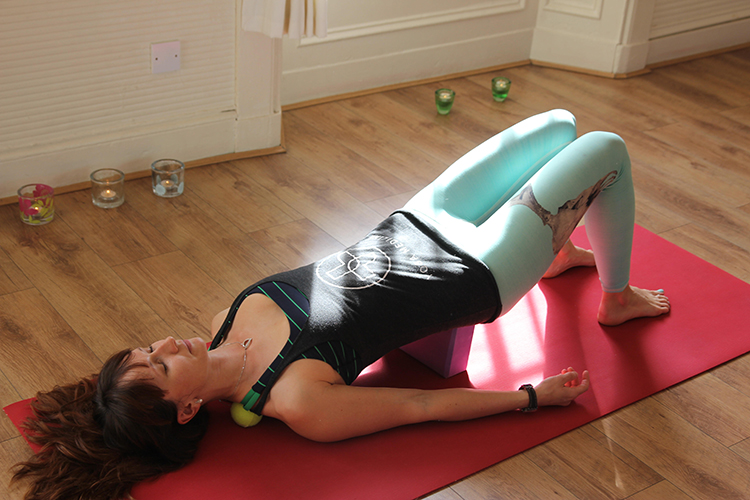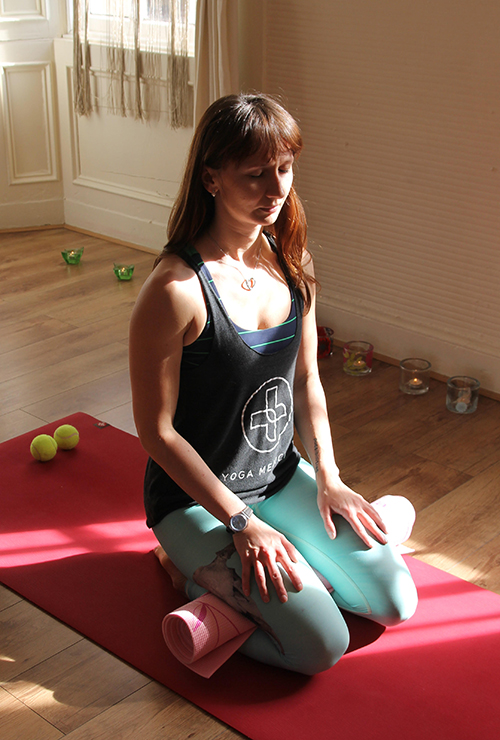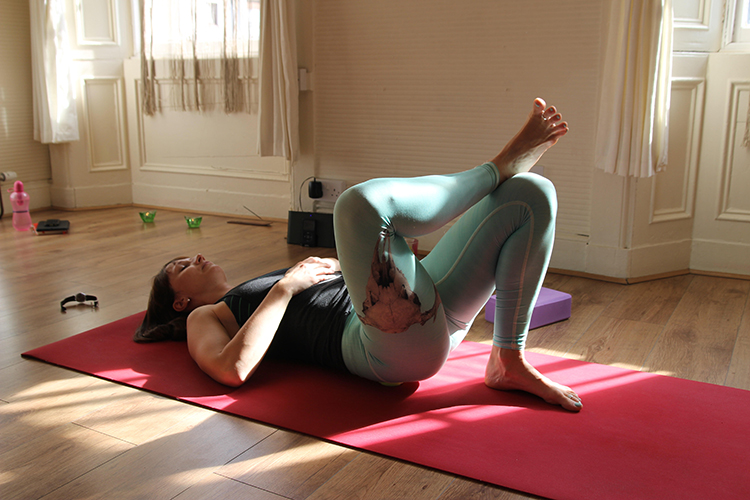Heal Your Back
We all deserve a pain-free and more mobile body! Movement is a fundamental characteristic of life, and muscles play a major role in that activity. In the human body musculature constitutes 30-50% of total body weight. Any kind of motion relies on the strength of your muscles whether it is walking, jumping, writing, sitting or chewing food and digestion.
We often believe that our strength comes from muscle growth. The bigger the muscle the stronger you are. What we don’t think of is the range of movement, so how long and elastic the muscle is. There is a big difference between a strong muscle and a big but tight one. A tight muscle, no matter how bulky it is, can be very weak and absolutely inefficient in its role to protect the joint or create movement. It can lead to an injury because you can’t move it fast enough to do what it needs to do.
Our body is incredibly intelligent; if the muscle is tense, the knot is there for a reason and probably won’t go away on its own. Furthermore, it will start affecting all the muscles directly or indirectly connected. If something goes wrong, the joint becomes dysfunctional, you have an injury or you overwork the body, the muscle or group of muscles associated with that joint contract to protect it and they stay partially contracted.
The devil lies in this contraction. Muscles can only stay contracted for so long and will never be as strong as the muscles that have the ability to completely relax. How often do you find yourself having your shoulders up your ears, or your elbows bent rather than arms hanging down freely? How often when you get stressed and can’t let go, your bum muscles tighten or you hold your belly in, even when you inhale? How often do you grit your teeth and then two hours later you experience a headache around your temples? Have you ever considered that these may be related? In this case, weakness is not caused by the lack of exercise, and further exercise won’t strengthen the muscles either.
There are a lot of types of trigger points depending on where they are located but generally it’s an area (big or small) that is very painful upon compression, very noticeable at palpation, sometimes red and hot. We all have very common sore bits: neck, shoulders, back, glutes and knees. The pain you feel may be very localised or it can be referred to a non-localised area. The latter one is more common.
What happens when you ignore your sore bits? If a muscle is in a constant state of contraction, blood flow to this area stops and it has excessive metabolic waste and oxygen use which sends pain signals to the brain. Your brain will just switch the muscles off as obviously it will want to stop the pain. But then what happens when it turns your stability muscles off? You start using your back muscles and other abductors to compensate and this is how the domino effect starts.
Self-myofascial release can sound like a fancy term but in practice it is a form of self-massage. You can use a foam roller, a small ball, or your own hands to apply pressure to specific areas or points on your body. You need to commit yourself to relaxing rather than gritting your teeth. On a scale from 0 (no pain) to 10 (hell no!) if you go above 5 you won’t be able to relax the muscle. Stay there for at least two minutes. You can turn your favourite music on or watch TV (if you must, I would suggest music).
Using myofascial release to heal your back can be a fantastic method. Back problems such as pain, spasm and limited range of motion are sometimes just a symptom of more complex issues involving different muscle groups. Tight calves affect the hamstrings, which in turn affect the glutes and the lower back.
>> Stretch Out Your Hamstrings + Ease Your Lower Back in This Yoga Class >>
What to work on:
1. Use foam roller and roll both calves up and down.
Stop and rest on knots. You can also tightly roll up your yoga mat, sit on the back of your legs and put the mat between your calves and your hamstrings. If it hurts too much, just lean forward and you will feel less discomfort.
2. Use either your foam roller to roll your hamstrings or sit on a tennis balls.
Sit with legs extended forwards, start from just below the sitting bones and slowly move down until more or less midway to your knees. Unfortunately you can’t really work the bottoms of your hamstrings as the closer to your knees you get the less pressure you apply. In this instance folding forward will increase the pressure.
3. Use a tennis balls for glutes.
For glut medius and piriformis, hook the right ankle over the left thigh, left food stays on the floor (the back release pose) and work one side at the time. In this instance work the right side, then switch the legs and work the left side.
– glut medius: place your ball at the very top of the right glut, just below the iliac crease. You may find three trigger points there. Start just lateral to sacrum and then roll hips to the side until you find all three.
– piriformis: imagine that both bum cheeks are like an owl’s head, you have two circles of feathers and eyes in the middle. Put a tennis ball just in the middle of your right bum cheek (owl’s eye) and stay there. This is a great place to go if you have got any sciatica issues.
– glut max: to get the lower parts of the muscle, stay on your back, bend the knees but keep your feet on the ground. Place both tennis balls under each glut, just above the sitting bone. Slowly move your hips from side to side.
4. Use two tennis balls for your back.
Lie at the bottom of your mat or a carpet. Put the tennis balls on either side of the spine, find a tender spot and stay there. After two minutes roll up your mat until you find another spot. These are very interesting spots. In Traditional Chinese Medicine they are called the Back Shu points. They are often tender to palpation when there is a disorder with the organ corresponding to the point you are massaging.
Use this method as often as possible if not every day. Remember that your power is through the combination of building strength and restoring the balance (letting go).
This post was written by Daria Wall, who began her yoga journey in 2008. She quickly became interested in Forrest Yoga and travelled across the world to train with Ana Forrest and completed the Forrest Yoga Foundation Teacher Training in Hong Kong. Her curiosity and fascination with anatomy and biomechanics of the human body sent her to Thailand where she begun her journey with an international yoga teacher, author, acupuncturist and health & wellness specialist, Tiffany Cruikshank, with whom she is completing the 500 hour certification. Daria is trained in full body massage, myofascial release, Thai massage and Chinese medicine. She completed the Professional Thai Massage 150 Hour training at the Thai Massage School of Chiang Mai, Thailand. She is also a certified Open Water Diver and runs a company called DP Wellbeing that delivers fitness, yoga, massage and nutrition guidance, classes, workshops and treatments across Dundee and Broughty Ferry in Scotland.










Leave a Reply